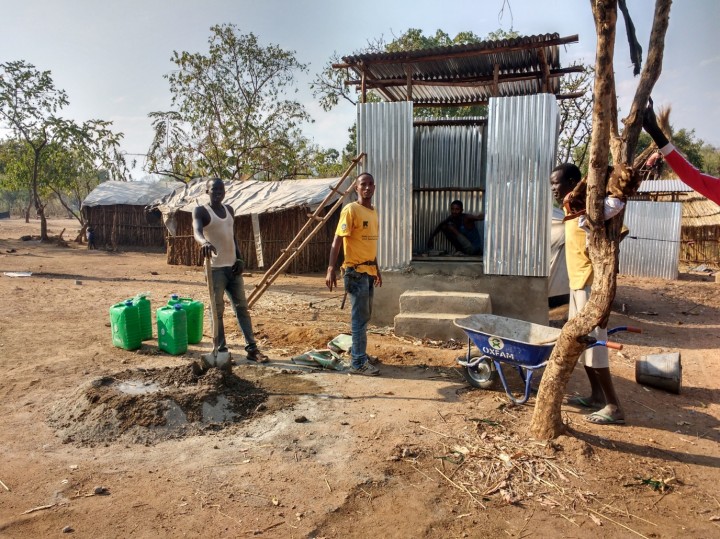Purpose
Refugees and asylum seekers from South Sudan in Western Ethiopia, Jewi camp, Gambella
Activities
This project will introduce two new innovative sanitation options (tiger worm and urine diversion toilets) to Jewi camp. These provide waste to value potential and increase the life span of toilets, thereby reducing the long term costs of sanitation programmes by reducing emptying and replacement of latrines.
In 2014 Leitchour and Nip Nip camps were flooded during the long rains and it was critical to relocate those refugees from the flooded camps to a safer place. Thus, a new camp, Jewi, was established in March and April 2015. The relocation to this camp started in mid May 2015. A total of 47,865 refugees consisting of 11,182 households were relocated to Jewi camp.
Oxfam is responsible for the intake, treatment plant, pressure main and system one central storage tanks. Under the proposed project, urine diversion and tiger worm toilets will be implemented under an operational research environment. These will have immediate benefits for 1428 PoC (each toilet will be shared by two families) in 2016 and 1272 in 2017. This activity aims to implement at scale and validate alternative sanitation solutions which can provide lower cost solutions in areas of high water table, rocky ground and/or where latrine emptying or desludging is problematic.
Images

Image: Construction of the new toilets
Countries of activity
Location of main activity
Objectives
The aim is to provide proof of concept which will then be used to inform UNHCR and partners sanitation programmes elsewhere.
The overall objective of this project is to reduce the vulnerability and suffering among South Sudanese refugees in Jewi camp in Gambella region through improved sanitation. The project will produce learning on innovative sanitation options that can inform WASH programmes in refugee settings more widely for Oxfam, UNHCR and other WaSH stakeholders.
Further information
Trialling urine diversion dehydrating toilets (UDDTs).
Oxfam has successfully implemented UDDTs in emergency contexts in Bangladesh, Haiti, Ethiopia, and South Sudan. Feedback from users has been very positive around ease of use and absence of smell. This project aims to contribute to addressing three challenges
i) Using local materials, to make a design that is quicker, easier and cheaper to construct than the traditional double vault latrine.
ii) To ensure it is properly used in terms of putting sawdust or appropriate covering material after use and sealing off the first chamber when full.
iii) To explore ways in which compost could be collected and utilised as value addition – by utilisation for agriculture by individual households or through sale, to pay for collection and maintenance of latrines.
Trialling Tiger worm toilets (TWTs).
The concept of using worms to digest fresh human faeces under laboratory conditions has been proven and documented . This has led to the development of the TWT for household use and Oxfam has five years of experience in constructed TWTs in Monrovia, Liberia and in 2013 undertook a very successful one year trial in Myanmar. The end product of a TWT is vermicompost . Tiger worms are so efficient in digesting waste that TWTs are the closest thing to a perpetual toilet in existence (virtually never needing desludging).
This is an Innovation Fund project.
Contact information
Angus McBride
Login to see the e-mail-adress of the contact person.
Filter tags
Camps (emergency or longer term) Emergency and reconstruction Fertiliser International NGO Multi-lateral and International Monetary Fund Practitioners Product design and engineering Resource recovery Specific to one or several countries Sub-Saharan Africa Technology comparisons Toilets or urinals (user interface) Treatment of wastewater or greywater Urine diversion dehydration toilets (UDDTs) Vermifilters, vermifilter toilets
















